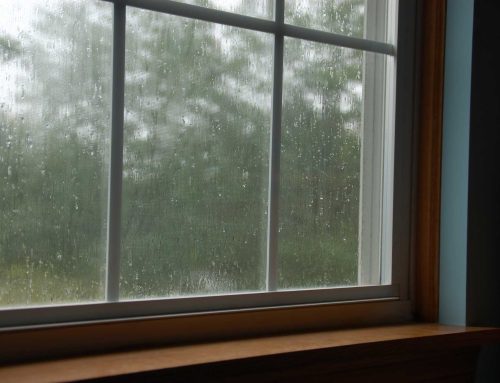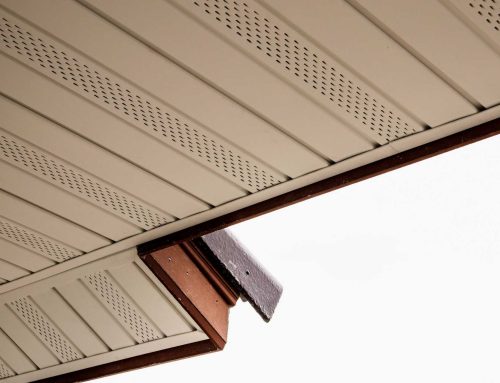When preparing to sell a home, sellers often focus on major upgrades, but small exterior details can have a surprisingly large impact on property value. During a home sale, your real estate lawyer is focused on the legal transfer of a sound property, and issues flagged in an inspection concerning the soffit and fascia can complicate this process. While they may seem like minor trim, these critical components of your roofing and ventilation system are key indicators of a home’s overall health; damage can be a red flag for deeper problems, leading to difficult negotiations or a lower selling price. Understanding their role in safeguarding your home from the elements is essential for protecting your investment, and this guide will provide actionable advice to ensure these small details make a big, positive impression.
The Unseen Heroes of Your Home’s Exterior
Soffit and fascia are two of the most important components of your roofing system, working together to protect the vulnerable space where your roof meets your walls. The fascia is the long, straight board that runs along the lower edge of the roof, and it’s the element you see most clearly from the street. It’s the finishing touch that conceals the ends of your roof rafters, and its primary job is to support the gutters and prevent water from getting behind them. The soffit is the finished surface below the fascia and the rafters; it’s the underside of your roof’s overhang. While less visible, its role is equally critical. Vented soffits are essential for proper attic ventilation, allowing air to circulate freely.
This circulation is vital for the health of your home. In the summer, soffit vents allow hot air to escape from the attic, which keeps your home cooler and reduces the strain on your air conditioning system. In the winter, they help prevent the formation of ice dams by keeping the attic temperature closer to the outside temperature, stopping snow on the roof from melting and refreezing at the eaves. A well-maintained fascia and soffit system, therefore, does more than just look good. It protects your roof structure, improves energy efficiency, and plays a crucial role in preventing long-term structural damage from moisture and heat.
The Financial Fallout of Neglect
Ignoring the condition of your soffit and fascia can have significant financial repercussions, both in terms of repair costs and diminished property value. From a curb appeal perspective, these components are highly visible. Peeling paint, dark stains from mould, or visible rot on the fascia board can make an entire property look tired and poorly maintained. For potential buyers, these visual defects are immediate red flags. They suggest a pattern of neglect and raise questions about what other, more serious issues might be lurking. This negative first impression can deter buyers from even wanting to see the inside of the home, leading to less interest and, ultimately, a lower final sale price.
The cosmetic issues are often just the surface of a much deeper problem. Damaged soffit and fascia create openings for water intrusion, which can lead to catastrophic damage. Water seeping behind a failing fascia can rot the ends of your roof rafters and the roof deck itself, leading to expensive structural repairs. Blocked or damaged soffit vents can trap moisture in the attic, creating a perfect breeding ground for mould and mildew, which can be costly to remediate and pose health risks. The goal of all exterior maintenance is to prevent moisture damage, and neglecting these key components undermines that entire effort, turning a minor maintenance task into a major financial liability.
A Homeowner’s Guide to Inspection
Proactive inspection is the best way to catch issues early and avoid expensive repairs. At least twice a year, ideally in the spring and fall, take a walk around your property and pay close attention to the roofline. Look for the most common soffit and fascia problems, such as peeling or bubbling paint, which is often the first sign that the wood underneath is retaining moisture. Check for cracks or soft spots in the wood by gently poking it with a screwdriver; if the wood feels spongy, rot has already set in. You should also look for dark streaks or stains, which can indicate a persistent leak from the gutters or roof above.
It’s also important to check for signs of pest infestations. Birds, squirrels, and insects are often attracted to decaying wood and can build nests in the voids behind your soffit and fascia, causing further damage. Look for droppings, nests, or visible signs of entry. Pay close attention to the seams and joints, as these are common failure points. If you notice sagging gutters, widespread discolouration, or large sections of rotting wood, these are clear indicators that it’s time to replace your soffit and fascia. Don’t delay; these are not problems that will resolve themselves and will only become more costly to fix over time.
Maintenance and Repair: Protecting Your Investment
Consistent, simple maintenance can dramatically extend the life of your soffit and fascia and protect your home’s property value. One of the most critical tasks is to keep your gutters clean and free of debris. Clogged gutters cause water to overflow and run down the fascia board, where it will inevitably lead to rot and deterioration over time. Similarly, make sure your soffit vents are not blocked by debris, insulation, or paint, as this obstructs airflow and defeats their purpose. Regularly cleaning the surfaces with a mild detergent can also prevent the buildup of mould and mildew, preserving the paint and the wood underneath.
When you do find minor issues, address them promptly. Small cracks can be filled with exterior-grade caulk, and areas with peeling paint should be scraped, sanded, primed, and repainted to restore the protective seal. However, if your inspection reveals extensive rot or damage, a simple repair may not be enough. In these cases, a full replacement with modern, durable materials like aluminum or vinyl is a wise investment. These materials are resistant to rot, pests, and moisture, and they require minimal maintenance, offering a long-term solution that will protect your home and its value for decades to come.
Small Details, Big Impact on Value
Ultimately, the value of your home is a reflection of its overall condition, including the small details that are often overlooked. Soffit and fascia are integral components of your home’s protective envelope, and their state sends a powerful message to potential buyers about the level of care your property has received. By investing a small amount of time and effort into their inspection and maintenance, you can prevent costly repairs, enhance your home’s curb appeal, and safeguard its financial worth. These seemingly minor elements make a major difference, proving that in the world of real estate, every detail counts in protecting your investment.











